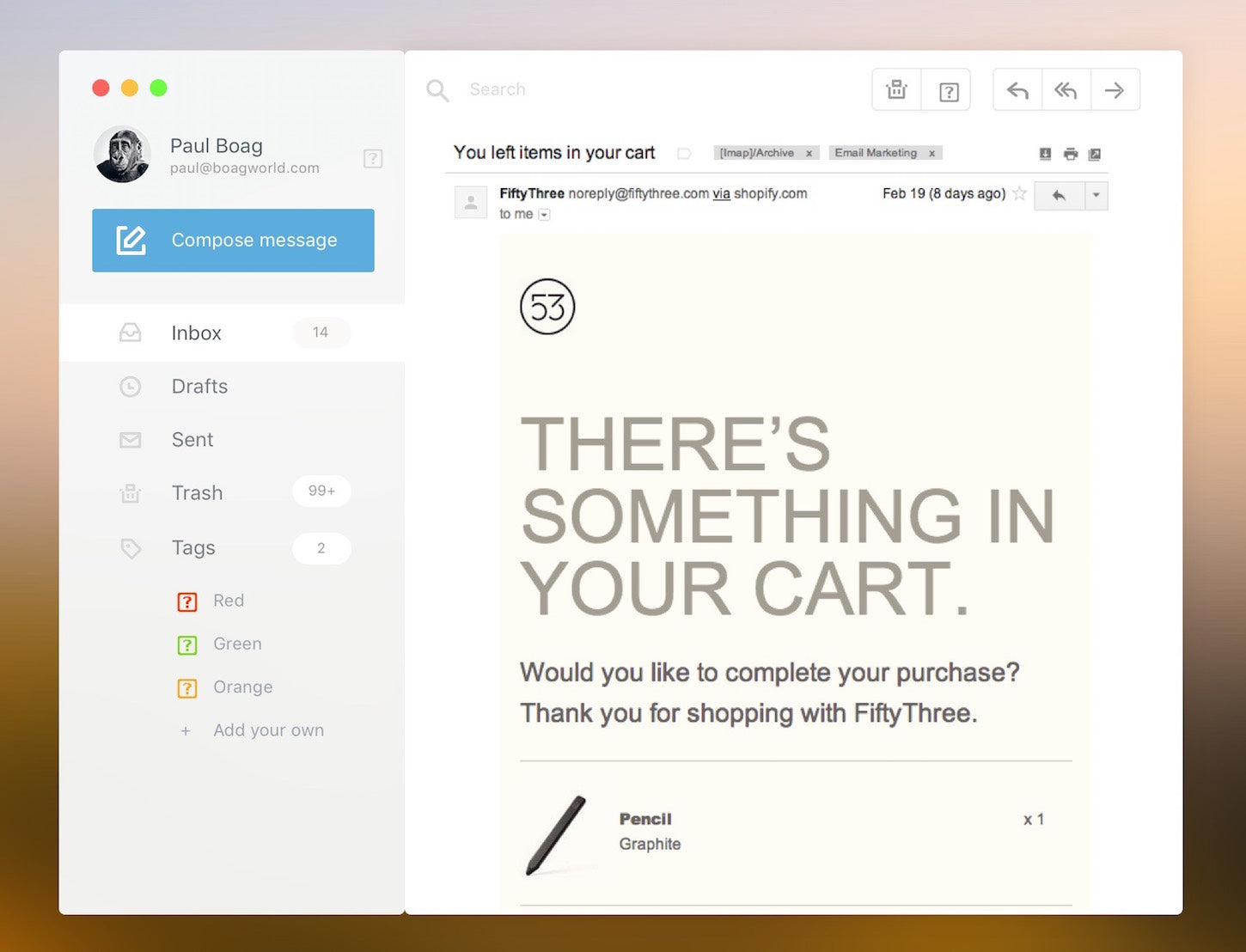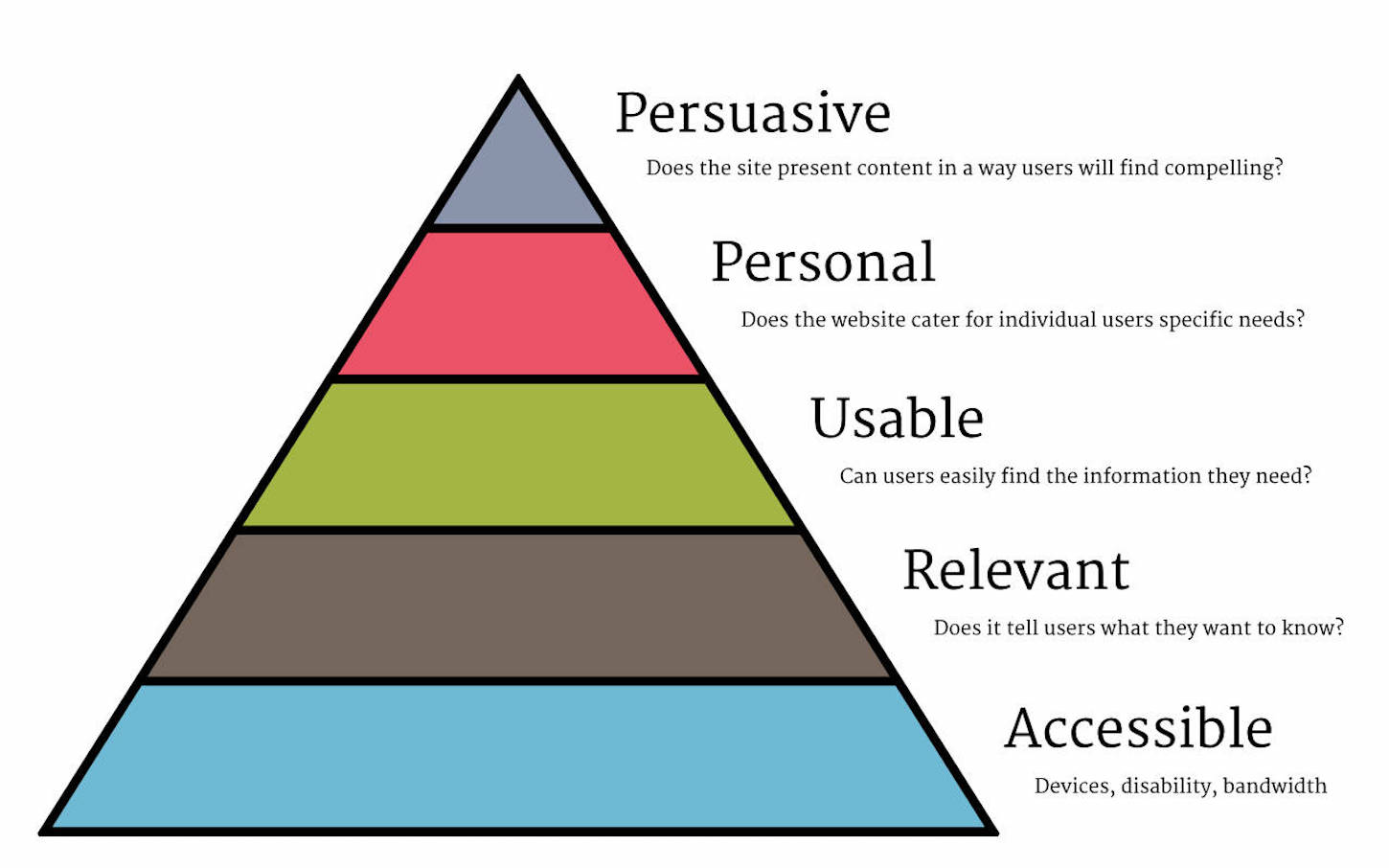Many seem to see providing a personalized ecommerce experience as a guarantee of success. But the reality is more complex.
“We want to be able to personalize the experience.”
This feels like the most common request I hear from those setting up their first ecommerce site. But is that where they should be focusing from day one?
There is little doubt that personalization is key to a successful ecommerce site. For example, 75 per cent of consumers like it when brands personalize their messaging and offerings. Also, 74 per cent of users become frustrated when content is not relevant to them. But most of all a personalized experience can improve conversion by almost 8 per cent.
Unfortunately, all too often it becomes an obsession at the detriment of other considerations. I want to put personalization within its broader context, and explain the dangers of rushing into it too early.
With that in mind, here are three things you should consider before rushing into creating a personalized experience for your users.
This begins by recognizing that personalization is quite low on the list of user needs.
1. Consider your users needs
Ecommerce personalization comes in many different shapes and sizes. Just a few examples might include:
- Recommendations based on previous behavior (such as previous purchases).
- Recommendations based on similar user behavior (such as those who made a similar purchase).
- Recommendations based on information gathered directly from the user (such as a survey).
- Communications based on user behavior (such as abandoning a basket).
- Offers based on personalized information (such as a birthday).
- Offers based on user behavior (such as a loyalty program).
- Personalization based on real-time data (such as location or time).
In fact, the number of options available is near limitless and restricted only by imagination and available data.

There is no doubt that when implemented well, personalization features work. They can increase customer satisfaction, conversion rates, and average customer lifetime value. They influence what people buy and can improve the average order value.
All this is a heady mix. So it’s unsurprising that many are keen to see it implemented on their website. But it’s easy to rush into personalization. Rush in when fundamental building blocks aren’t in place. Building blocks that we need to make personalization work.
When it comes to building an ecommerce site there is a hierarchy of user needs. About 73 per cent of customers say they prefer a personalized shopping experience. But this is meaningless if more basic things are not in place.

At the most basic level, your website needs to be accessible. For example, many ecommerce sites suffer from poor performance on mobile devices. No amount of personalization is going to matter if users have to wait for your website to load over a 3G network.
Also, it doesn’t matter if you recommend products if I’m busy doing something else. It’s more important your content is timely and relevant, than personalized.
Most of all your ecommerce website has to be usable. A clever recommendation engine doesn’t help a customer find a specific product. Neither does it help if the checkout process is difficult to use.
But even if the more basic building blocks are in place. Even if you’ve implemented personalization. Even in all these circumstances there will still be more work to do. For example, a clever algorithm won’t increase sales if your products are not appealing. Persuasive copy and well shot imagery are necessary to reinforce any personalization.

Don’t get me wrong, personalization is an important part of the mix. The problem is we often put it in place at the cost of more important things. Worse still, we sometimes undermine the experience with a poor implementation of personalization.
You might also like: 3 Strategies for Improving User Experience in Your Ecommerce Designs
2. Consider how personalization can undermine the experience
If not considered, personalization can damage the usability and relevance of a website.
For example, in a desire to personalize many sites force users into creating an account. Although an account does offer some benefits, it’s not always appropriate. This is especially true if users aren’t often ordering from the website.
Also, recommendation engines are not always accurate. Often they lack context. For example, I once bought a gift for my nine year old niece on Amazon. The site then spent the next six months recommending that I buy My Little Ponies.

We need to be careful when asking the user to tell us about themselves. This is even true if it’s to provide a better personalized experience. This is not because of privacy. It’s because users don’t like entering unnecessary data, even if it improves the experience.
We need to prove to them that the effort is worth it. We also must make it clear why we are asking for the information. They have to understand the benefit if you want them to invest the effort.
A sense of control is also another important factor in personalization. If your recommendations are wrong, the user needs the ability to correct them. They also need the ability to opt-out. Without this level of control, personalization can begin to feel intrusive and even insulting.
In short personalization is also not a silver bullet. This means it’s not always the best place to invest our money.
3. Consider where your money is best invested
Unfortunately, most of us do not have pockets as deep as Amazon. We are keen to improve our site, but can only afford to focus on a limited number of areas.
Personalization offers us increased conversion and higher average order values. This makes it look like a good investment. This impression is further reinforced by ecommerce vendors keen to sell their platform.
In truth, the implementation of personalization features can often be expensive and time-consuming. This means that when you have a limited budget, other options may create a better return.
I’m shocked at how many sites have terrible product descriptions and imagery. Sites that seem to have the funds to build complex personalization functionality.

In most cases, it makes more sense to get the basics right before looking at personalization. Not only will they make a larger difference to conversion, they also tend to be cheaper to put in place.
I’m aware that this post can come across as negative towards personalization. That is not my intention.
Personalization is great… but
Most ecommerce sites should introduce some form of personalization if they have not already. But it’s critical you do this in the right way.
Ensure the foundations are in place first. Make sure your site is accessible, relevant, and usable before considering personalization.
Also, don’t just buy into a personalization solution. Tempting though this is, technology is never the right starting point.
As Steve Jobs once said:
"You have to start with the customer experience and work backwards to the technology."
Begin by working out what users need. Will personalization actually help improve their experience? If it doesn’t, they’ll ignore it and you will not reap the benefits.
Even once you know the need, there will be many approaches you could take. Once again, the approach you choose shouldn't be about the technology.
Before you roll out personalization, you need to prototype the best approach. Only then can you be sure you have met the user’s need. Only then do you know your approach will generate a return large enough to justify the investment. It’s at this point that you can start to look for technology that can deliver on your requirements.
Build at the right time
I would encourage you to embrace personalization on your site. It has the potential to transform your customer’s experience and increase revenue. But this will only happen if you approach it in the right way, and build it at the right time. Do that, and the potential is huge.
How do you approach personalization? Tell us in the comments section below!
Read more
- How to Use Eye Tracking in Usability Tests
- Sustainable UX: How Designers Can Help Make a Positive Impact on the Environment
- 22 Basic UX Laws That Every Designer Should Know
- What Makes or Breaks an Ecommerce Shopping Experience? This Survey has the Answers
- Streamline Your Ecommerce Experience With The Laws of Simplicity
- Improve Your Design Process With These 4 Deliverables
- What to Consider When Planning a Website Redesign
- The Case for Continual Development: The New Way to Approach Ecommerce
- Content Strategy: The Principles we Followed to Build the New Shopify App CLI
You might also like: The User Experience Delusion

